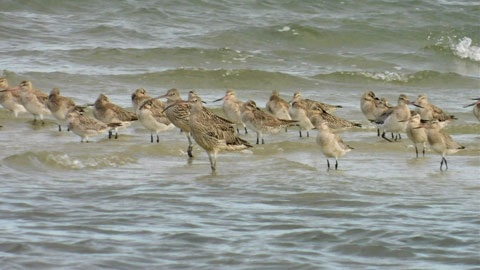Migratory and residential shorebird populations

Moreton Bay has a range of habitats suitable for residential and migratory birds to rest, forage, and breed. These include:
- coastal areas
- sandy beaches
- mudflats
- rocky foreshores
- freshwater wetlands.
Pumicestone Passage is home to 1,500 resident shorebirds across 11 species, and 40,000 migratory shorebirds across 24 species. Migratory species visit Moreton Bay between mid-August and mid-April each year.
How you can help protect migratory shorebirds
Moreton Bay is the crucial endpoint for several migratory species. This provides them with a chance to recover before returning for the next breeding season. You can help them recover by:
- not disturbing them. Disturbances can cause them to use energy. This can prevent them from gaining the weight needed for migration.
- giving them space. Swimming, boating, kayaking, and fishing within 100 metres of shorebirds may make them take flight and burn vital energy.
- avoiding areas where they are feeding or roosting.
- walking dogs on a leash unless in a designated off-leash area.
- keeping our natural areas clean. Put your rubbish in the bin, take your fishing equipment with you, and avoid single-use plastics.
- viewing them from a distance using binoculars, viewing scopes, cameras, and bird hides.
How Council is helping local shorebird populations
Raising awareness through education
Council is creating awareness about working together to protect and conserve our shorebirds.
The Agents of Discovery app helps educate kids about shorebirds and their habitat. Learn more about Agents of Discovery.
Construction of artificial hightide roosts
Council manages two artificial hightide shorebird roosts. These roosts are at Kakadu, Banksia Beach and Ned Bishop Park, Toorbul. Both sites provide long-term habitat for roosting shorebirds. Residents and visitors cannot access these roosts.
Management of natural roosting site
Natural roosting sites are natural environments and management of these is minimal. They occur along the shorelines of Pumicestone Passage and from Godwin Beach to Woody Point. Roosting sites are also inland near salt marshes, claypans and freshwater wetlands.